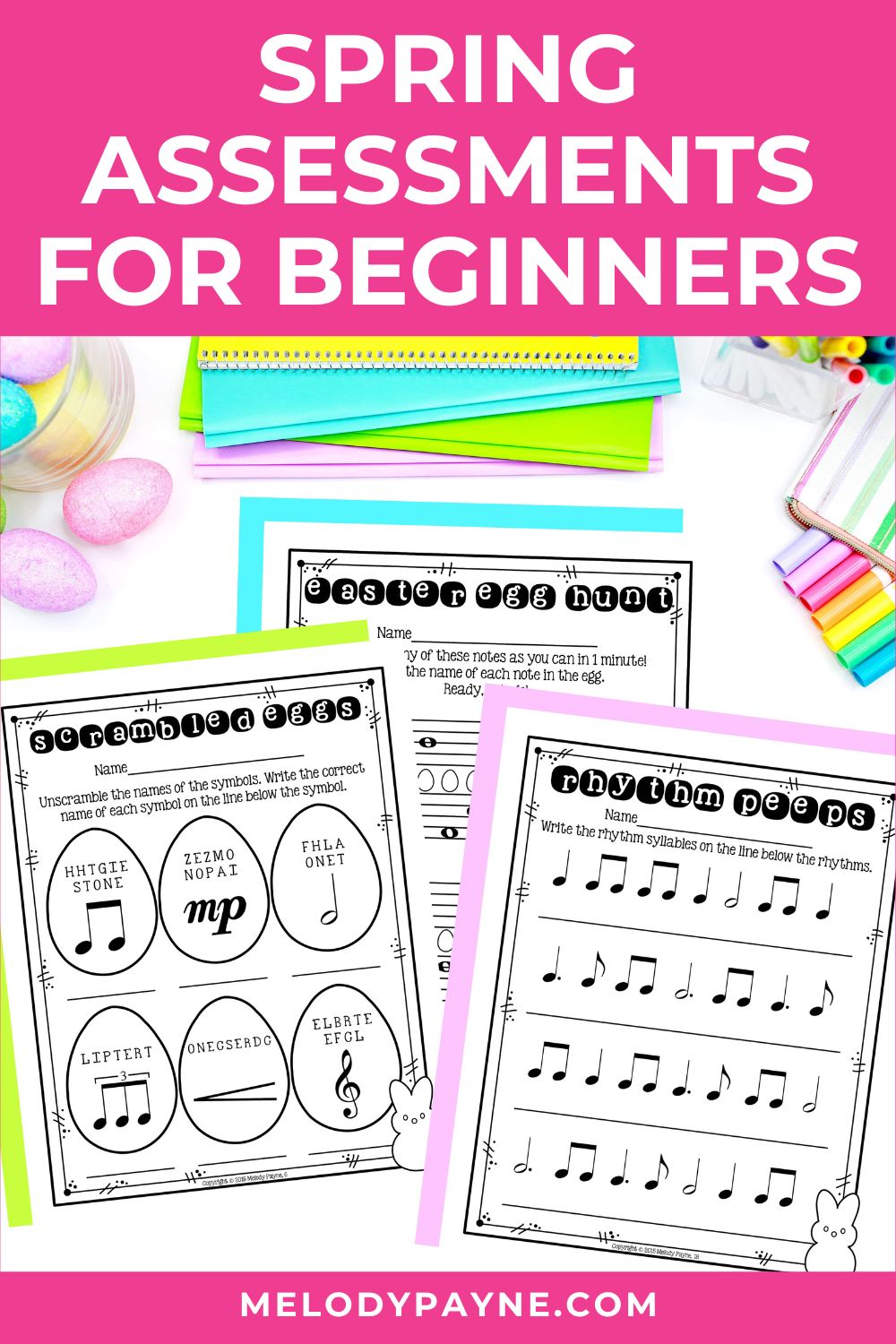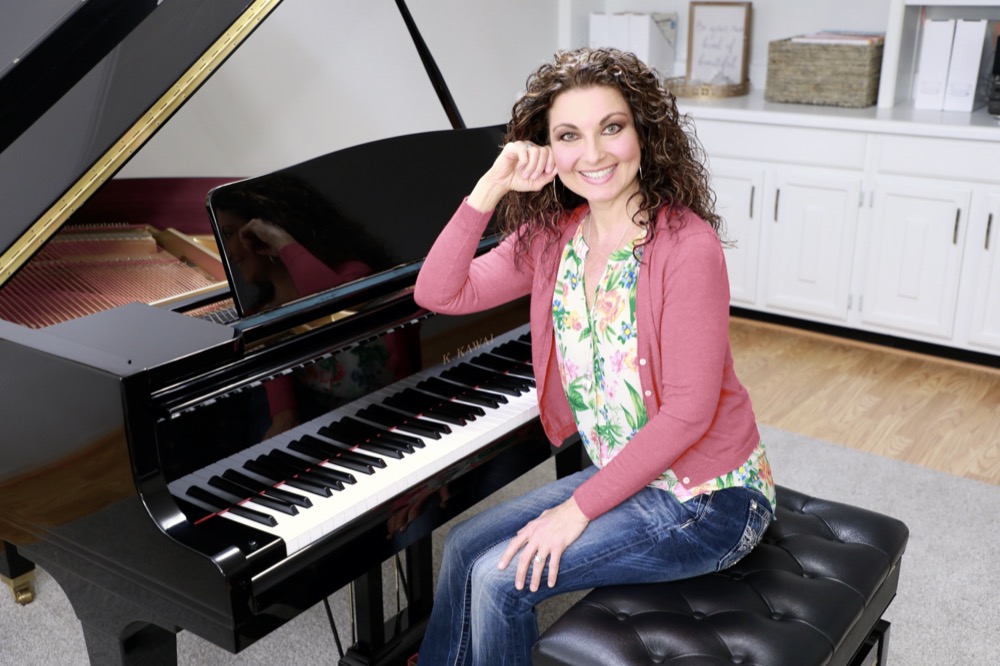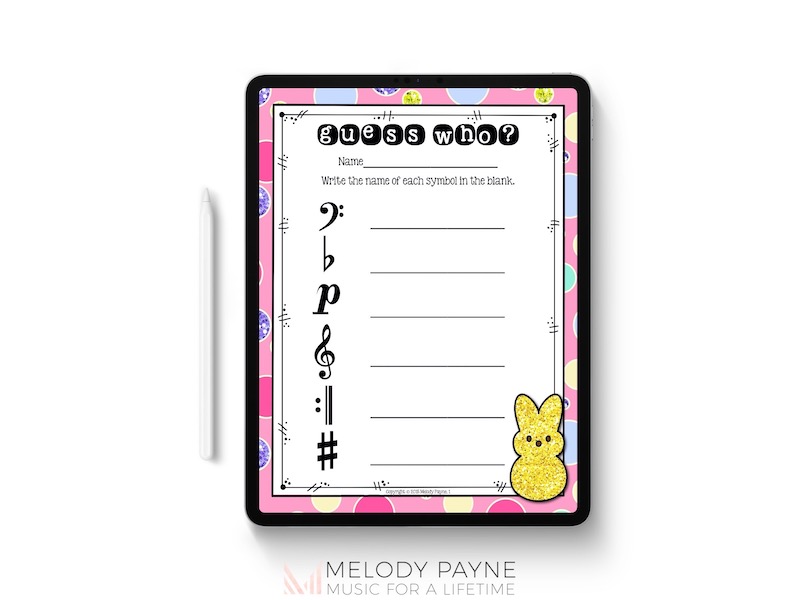How I Use Easter Piano Worksheets to Conduct Spring Assessments for Beginners
This post may contain affiliate links. If you purchase something through an affiliate link, I will receive a small commission at no cost to you. For more information, read the disclosure statement here.

Organizing Digital Teaching Resources
The idea of using Easter Piano Worksheets as a seasonal assessment tool evolved from multiple steps. First step: spring cleaning my digital collection of teaching materials. I had accumulated resources over the years yet found myself using hardly any of it because I lost track of what I had.
In the end, I only kept materials which pedagogical value was immediately clear to me, student, and parents. Resources must be worth fitting into an already packed 30-minute lesson. And it must pique a genuine interest in my (very discriminating) students. Holiday/seasonal materials, such as these Easter Piano Worksheets easily passed the litmus test.
Gaining Clarity on How Music Theory Will Fit into Lessons
The next step involved figuring out how to organically incorporate resources into lessons. For certain concepts, a simple explanation will suffice; other times, engaging with the material via written work is helpful.
Organizing my resources helped immensely. I printed one hard copy each of my favorite resources and placed them in a binder by category. I could then easily pull it out when the student needed a particular resource. However, since the core piano curriculum for each student is different, I wanted to have a systemized way to review and assess fundamental knowledge.
This is how I decided to start conducting spring assessments. This year I am using Easter Piano Worksheets. It turns out that the timing works well for students who just started piano in the fall.
Students who are finishing their second year of piano can also benefit from reviewing these concepts. The best part of doing this assessment for all my beginners-late beginners is that everyone reviewed terms they knew and learned something new in the process.
Using Easter Piano Worksheets for Elementary Piano Students
The beauty of conducting seasonal assessments is that the changing of the seasons is my built-in reminder to pull out all my seasonal material. With Easter Piano Worksheets there is no prep needed. I just need to have a general idea of how to get through the (16) pages over the next month or two.
I like the flexibility of giving myself all of March, April, and May to use the Easter Piano Worksheets. Since we are usually in the thick of recital preparation, if the month of March gets away from me, I still have April and May.
The quizzes are comprehensive and divided into four categories:
- Music term/symbol identification
- Drawing symbols
- Note naming
- Rhythm
It works well to complete (2-3) worksheets per week. Students will be more engaged if each page is from a different category. Within a busy lesson, the best time to fit in an assessment is when students need a mental break after troubleshooting a piece.
Incorporating seasonal material gets the students excited because they know it is something special. Sprinkling in activities that are both useful and fun – and not just “another page in the lesson book” – is important in avoiding student and teacher burn-out.
How to Assign Easter Piano Worksheets
I typically use a PDF reader on my iPad (read How to Use PDF Worksheets on Your iPad During Online Piano Lessons). Students simply tell me the answer for symbol identification, so it works like a flashcard. For symbol writing, I have students write the answers on a whiteboard. The Good Notes App also allows students to complete exercises directly on the iPad using a stylus.
If you want to assign these for homework digitally, Easel by TpT is a great option. You can upload all the pages and set a deadline, such as two pages per week. Students will be able to use the annotation tools to type or write in their answers directly from their web browser. All grading takes place directly in the app for your convenience.
As much as possible, I prefer to complete the assessments little by little during the lessons. We complete rhythm worksheets together during the lesson. First, I have students figure out where the bar lines should go, draw them in, and then clap while chanting rhythm syllables.
When I have assigned physical homework pages, they are later found at the bottom of the piano bag, uncompleted. You might also find that not all families want extra written homework for piano.
Grab 20 Easter Worksheets for Elementary Piano Students this spring as a way to liven up lessons for beginners in a useful way!
Additional Spring Resources for Your Piano Studio
In the beginning of this post, I mentioned doing a spring cleaning of all my digital resources. If you are interested in getting more organized in your studio but would appreciate some guidance, I highly recommend the Piano Teacher’s Survival Kit. It has a useful template for progress reports, in case you would like to provide families with a spring/year-end progress report.
Lastly, students LOVE creating their own compositions. So it only makes sense to incorporate a spring composition activity sometime during March, April, or May!
If you like Easter Piano Worksheets, you’ll also like…
Don't miss out!
Follow on Facebook and Instagram, join the best Facebook group for piano teachers, and subscribe to the newsletter to get helpful teaching tips, resources, and tutorials delivered straight to your inbox every week.
Michelle Madasamy
Michelle Madasamy
Welcome!

Hi! I’m Melody Payne, a pianist and piano teacher, educational resource author, a fun-loving wife to the most wonderful and talented hubby I could ask for, and a lifelong learner who loves to share. I want to make your life as a music teacher easier by writing and sharing helpful and relevant music teaching articles, and by creating educational resources with your very own students in mind. If you are a parent who wants to enroll your child in piano lessons, I’d love for us to get started building those skills that can give your child a lifetime of musical enjoyment!





